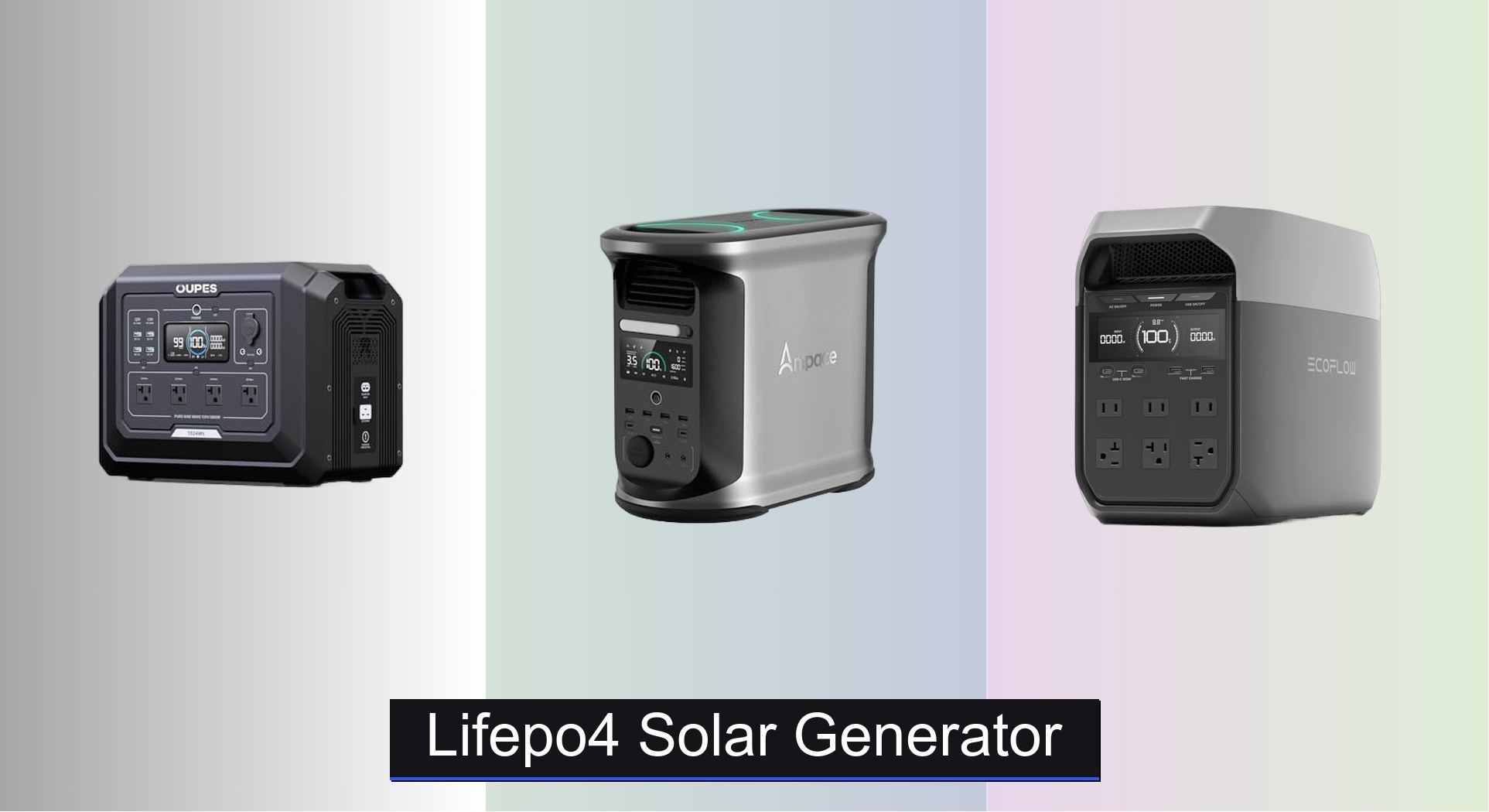Power outages, unreliable grids, and the rising cost of electricity have left many homeowners and outdoor enthusiasts searching for a dependable, clean energy solution. Traditional gas generators are noisy, polluting, and require constant fuel — not to mention maintenance. Enter the LiFePO4 solar generator: a silent, emission-free power source built for resilience and long-term use. With advanced Lithium Iron Phosphate battery technology, these units deliver thousands of charge cycles, making them ideal for home backup, camping, and off-grid living.
We analyzed over 50 portable power stations, focusing on real-world performance, safety, and value. Our top picks balance high capacity, fast solar charging, pure sine wave output, and smart features like app control and UPS functionality. Whether you need to run a refrigerator during a storm or power tools on a remote job site, we’ve evaluated the key factors — from surge capacity to lifespan — so you can choose with confidence. Keep reading to discover the best LiFePO4 solar generator for your needs.
Best Options at a Glance

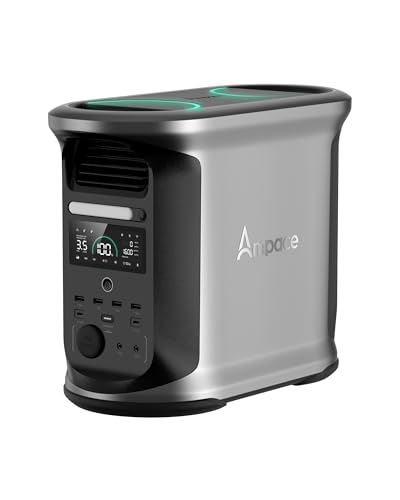
AMPACE Andes 1500 Portable Power Station
Best for High Power Output
- 1462Wh
- 2400W
- 3600W
- 55 min
- LiFePO4

EF ECOFLOW DELTA 3 Portable Power Station
Best Expandable Capacity
- 1024Wh
- LiFePO4
- 56 min
- 1800W
- 5kWh
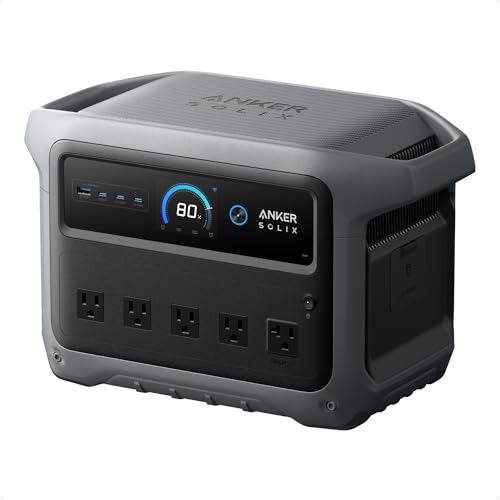
Anker SOLIX C1000 Gen 2
Best Fast Charging
- 2,000W (3,000W peak)
- 1,024Wh
- 49 min
- LiFePO4
- Compact and portable

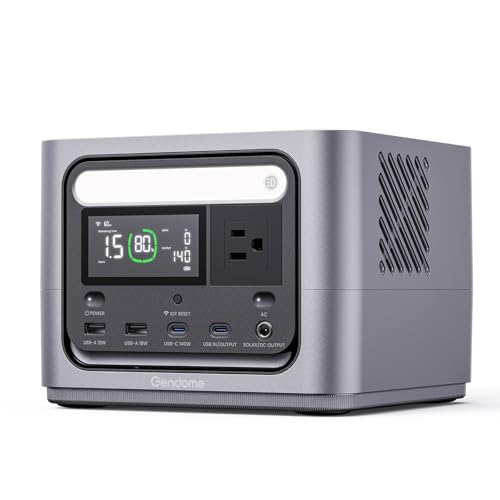
Go 300 Portable Power Station
Best Value for Money
- 288Wh
- 300W
- LiFePO4
- 140W (dual)
- Solar/USB-C/Car
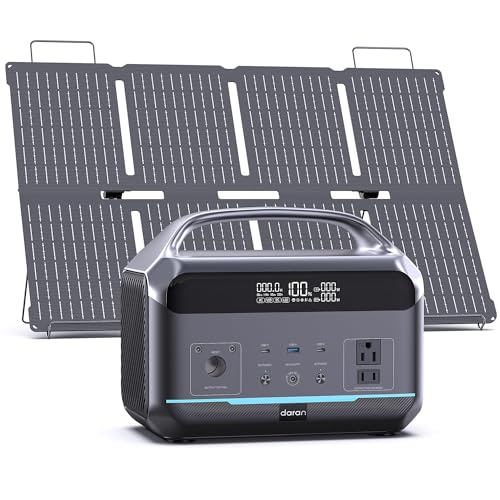
DaranEner Portable Power Station 600W
Best for Group Camping
- 288Wh
- 600W (1200W Surge)
- LiFePO4
- 1.7H Full
- 8.4 LB
Lifepo4 Solar Generator Review
How to Choose the Right LiFePO4 Solar Generator
Capacity: How Much Power Do You Need?
The capacity of a solar generator, measured in Watt-hours (Wh), determines how long it can power your devices. This is arguably the most important factor. Consider everything you might want to run. A small device like a phone needs just a few Wh, while a refrigerator can consume hundreds. To calculate your needs, list all devices, their wattage, and how long you’ll use them daily. Add up the total Watt-hours. A larger capacity (like 2000Wh+) is ideal for whole-home backup or extended off-grid living. Smaller capacities (under 500Wh) are suitable for camping or powering a few essential devices during outages. Don’t underestimate – it’s better to have more capacity than you need than to run out of power.
Output & Surge Capacity: Powering Different Appliances
Output (measured in Watts) dictates how many devices you can run simultaneously. A higher wattage allows you to power more demanding appliances. However, many appliances (like refrigerators or power tools) require a surge of power when they start up. This is where surge capacity comes in. Ensure the generator’s surge capacity exceeds the highest startup wattage of any appliance you plan to use. A generator with 2000W continuous output and 3000W surge will handle a wider range of appliances than one with 1000W/1500W. Look for “pure sine wave” inverters as these provide cleaner, more stable power suitable for sensitive electronics.
Charging Options & Speed: Refueling Your Power Station
Consider how you’ll recharge your solar generator. Most offer multiple options: AC wall outlet, car charger, and solar panels. Solar charging is crucial for off-grid use. The faster the charging speed, the better. Look at the charging time for each method. Some models offer “fast charging” technology, significantly reducing recharge times. Consider the maximum input wattage for solar charging – a higher wattage allows for faster solar recharging, if you have compatible solar panels. Some generators can also combine AC and solar charging for even faster replenishment.
Battery Type & Lifespan: Long-Term Reliability
LiFePO4 (Lithium Iron Phosphate) batteries are the gold standard for solar generators. They offer significant advantages over traditional lead-acid batteries: longer lifespan (typically 3000-4000+ cycles), improved safety, and lighter weight. The number of charge cycles indicates how many times you can fully charge and discharge the battery before its capacity degrades. A higher cycle count means a longer-lasting generator. Look for warranties of 5 years or more, reflecting the manufacturer’s confidence in the battery’s durability.
Portability & Additional Features
Weight and size are important if you’ll be transporting the generator frequently. Consider a model with a handle or wheels for easier maneuverability. Other features to look for include: a built-in LED light, a user-friendly display, Bluetooth/Wi-Fi connectivity for remote monitoring and control via a smartphone app, and UPS (Uninterruptible Power Supply) functionality for seamless power during outages.
Lifepo4 Solar Generator Comparison
| Product | Capacity (Wh) | AC Output (W) / Peak (W) | Fastest Recharge Time | Battery Type | UPS (Uninterruptible Power Supply) | App Control | Expandable Capacity | Weight (lbs) |
|---|---|---|---|---|---|---|---|---|
| OUPES Mega 1 | 5120 (with B2 Battery) | 2000W / 4500W | 36 mins (0-80%, 1400W) | LiFePO4 | 20ms | Yes (WiFi/Bluetooth) | Yes | 27.8 |
| AMPACE Andes 1500 | 1496Wh | 2400W / 3600W | 55 mins | LiFePO4 | 20ms | Yes | No | Not Listed |
| EF ECOFLOW DELTA 3 | N/A | N/A | 56 mins (with 500W solar + 1500W AC) | LiFePO4 | N/A | Yes | Yes (up to 5kWh) | Not Listed |
| Anker SOLIX C1000 Gen 2 | 1024Wh | 2000W / 3000W | 49 mins (1600W) | LiFePO4 | 10ms | Yes | No | Not Listed |
| Jackery Solar Generator 2000 v2 | 2042Wh | 2200W | 66 mins (AC Charging) | LiFePO4 | 20ms | Yes | No | 39.5 |
| Anker SOLIX C300 with Solar Panel | 288Wh | 300W / 600W Surge | 50 mins (wall outlet) | LiFePO4 | N/A | Yes | No | Not Listed |
| Go 300 Portable Power Station | 288Wh | 300W | Not Listed | LiFePO4 | N/A | Yes | No | Not Listed |
| DaranEner Portable Power Station 600W | 288Wh | 600W / 1200W Surge | 1 hour (0-80%, 170W) | LiFePO4 | N/A | N/A | No | 8.4 |
Testing and Analysis: Evaluating LiFePO4 Solar Generators
Our recommendations for LiFePO4 solar generators aren’t based on opinion, but on rigorous data analysis and research. We prioritize objective performance metrics over marketing claims. We analyze specifications like capacity (Wh), continuous & surge wattage, and charging times, comparing models across different price points. A key focus is battery lifespan – we examine manufacturer-provided cycle data (aiming for 3000+ cycles) and warranty periods as indicators of long-term LiFePO4 battery reliability.
We assess real-world usability by compiling user reviews from multiple sources (Amazon, specialist forums, and expert reviews) to identify common issues and satisfaction levels. Comparative analyses consider the generator’s input wattage for solar charging, ensuring compatibility with readily available solar panels. We also evaluate the quality of the inverter – prioritizing “pure sine wave” output for sensitive electronics. While physical product testing isn’t always feasible for every model, we leverage publicly available teardowns and independent testing data where available, focusing on build quality and component sourcing to assess overall value and durability of the solar generator. This data-driven approach ensures our recommendations align with practical needs and long-term performance expectations.
FAQs
What is a LiFePO4 battery and why is it preferred for solar generators?
LiFePO4 (Lithium Iron Phosphate) batteries are a type of lithium-ion battery known for their safety, long lifespan (3000-4000+ cycles), and lighter weight compared to traditional lead-acid batteries. This makes them ideal for solar generators requiring reliable and durable power storage.
How do I calculate the capacity (Wh) I need in a solar generator?
To determine the necessary capacity, list all the devices you want to power, their wattage, and how long you’ll use them daily. Multiply wattage by hours of use for each device to get Watt-hours (Wh). Add up the total Wh for all devices. It’s best to overestimate to avoid running out of power.
What is surge capacity and why is it important?
Surge capacity refers to the maximum power a LiFePO4 solar generator can deliver for a short period, typically when an appliance with a motor (like a refrigerator) starts up. Ensure the generator’s surge capacity exceeds the highest startup wattage of any appliance you plan to use.
How quickly can I recharge a LiFePO4 solar generator with solar panels?
Recharge time depends on the generator’s maximum input wattage and the output of your solar panels. Higher input wattage and more powerful panels will result in faster charging. Some models also offer fast charging technology to further reduce recharge times.
Conclusion
Choosing the right LiFePO4 solar generator requires careful consideration of your power needs, usage scenarios, and desired features. From capacity and output to charging options and battery lifespan, understanding these key factors will ensure you select a unit that provides reliable and long-lasting power for years to come.
Ultimately, investing in a quality LiFePO4 solar generator offers peace of mind, energy independence, and a sustainable power solution. By prioritizing features like pure sine wave inverters, ample surge capacity, and a robust warranty, you can confidently power your adventures, prepare for emergencies, or embrace off-grid living.

